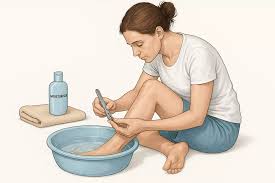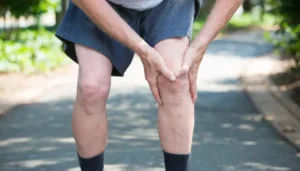Diabetic wound care is fundamental in preventing complications that can arise from minor cuts or sores. Diabetes affects circulation and nerve function, and wounds may heal slowly, carrying a higher risk of infection. Managing these injuries at home with proper techniques can significantly impact recovery and long-term health. Here’s more information on effective strategies for diabetic wound management at home:
Explore Risks of Diabetic Wounds
Diabetic wounds develop differently from regular cuts or scrapes. High blood sugar damages blood vessels and nerves, creating two major problems for wound healing. Poor circulation means less oxygen and nutrients reach the wound site. Nerve damage reduces sensation, so you may not notice small injuries until they become larger problems.
Diabetic foot ulcers are particularly common, often forming under the big toe or on the ball of the foot. These wounds can deepen quickly, potentially exposing bone if left untreated. The combination of poor circulation and reduced immune function also makes diabetic wounds prone to infection.
Clean and Dress Wounds Properly
Clean diabetic wounds require gentle but thorough care. Begin by washing your hands completely before touching the wound area. Use clean, lukewarm water to rinse the wound, avoiding harsh soaps or chemicals that may irritate damaged tissue.
Pat the area dry with a clean towel, being careful not to rub or create more trauma. Apply a thin layer of antibiotic ointment, as recommended by your healthcare provider, and then cover with a sterile bandage. Change dressings daily or as soon as they become wet or soiled.
Choose appropriate dressing materials for your specific wound type. Non-stick pads work well for most diabetic wounds, while foam dressings provide extra cushioning for pressure areas. Make sure dressings are neither too tight nor too loose, as both can interfere with healing.
Monitor Daily To Prevent Infection
Inspecting wounds daily is a key part of diabetic wound care. Inspect your wound daily for signs of healing or complications. Healthy healing wounds gradually decrease in size and depth. The surrounding skin should maintain normal color and temperature.
Watch for signs of infection that require immediate medical attention. These include increasing redness that spreads beyond the wound edges and green or yellow discharge with a foul smell. Also, watch for increased pain or tenderness, red streaking from the wound, or fever. Document changes with photos, if possible, to track progress over time.
Support Healing Through Healthy Habits
Nutrition plays a fundamental role in diabetic wound care. Your body needs adequate nutrients to rebuild damaged tissue and support immune function. Include lean proteins, fresh vegetables, and whole grains in your diet while avoiding foods that cause blood sugar spikes.
Stay hydrated by drinking plenty of water throughout the day. Proper hydration helps maintain good circulation and supports the body’s natural healing processes. Limit alcohol consumption, as it can interfere with blood sugar control and immune function.
Protect the wound from further injury by wearing appropriate footwear. Avoid activities that put pressure on the healing area. Elevate the affected limb when possible to reduce swelling and improve circulation to the wound site.
Book Your Diabetic Wound Care Appointment
Managing diabetic wounds at home requires dedication and attention to detail. The key strategies include understanding your unique risks and maintaining excellent wound hygiene. You must also monitor daily for changes and support your body’s healing through healthy lifestyle choices. Seek professional diabetic wound care promptly when home management isn’t sufficient. Contact a wound management specialist near you to book your appointment.














